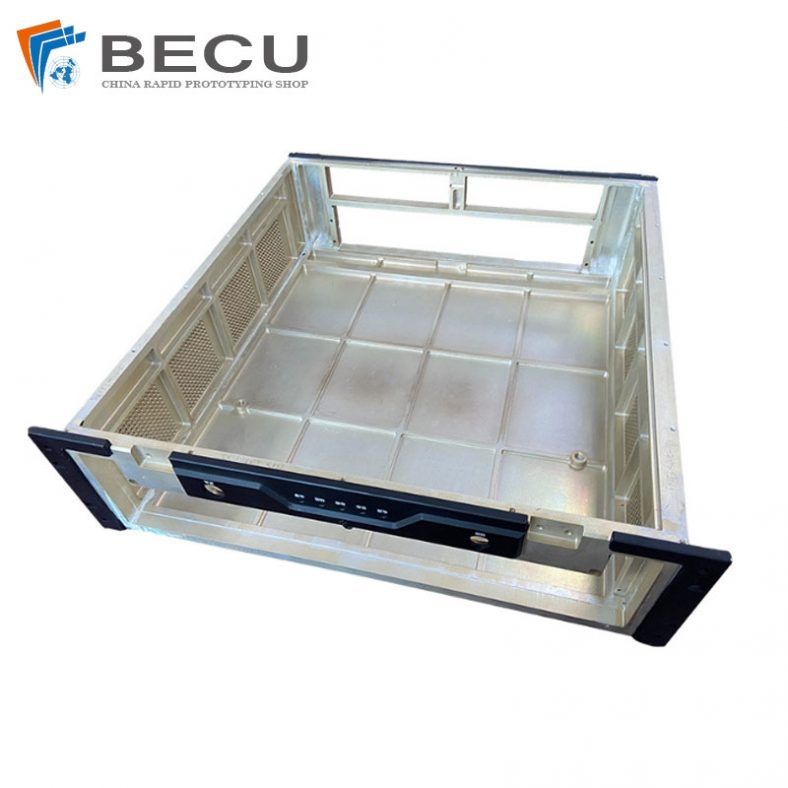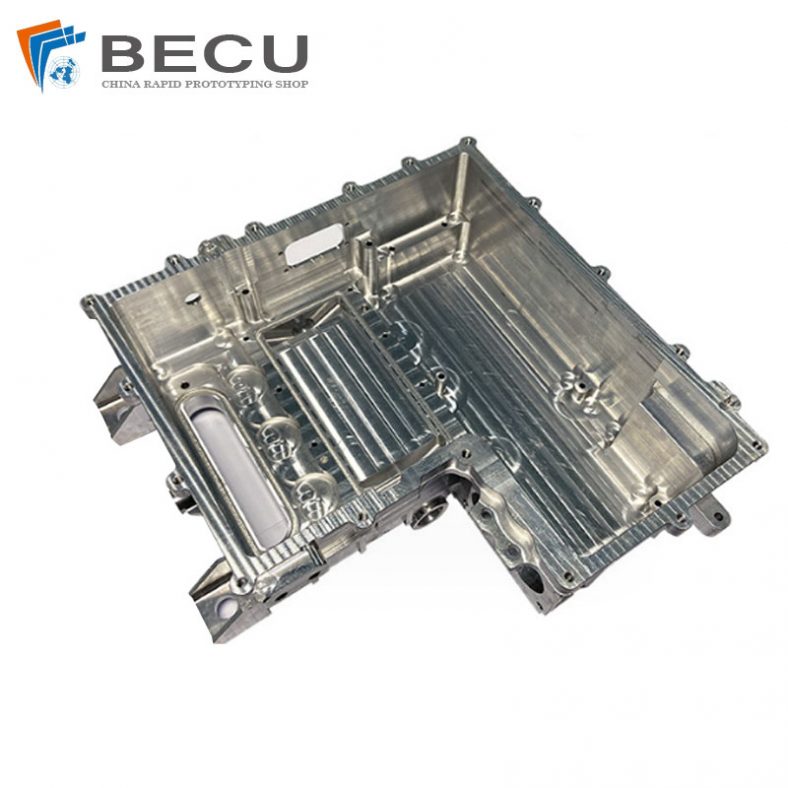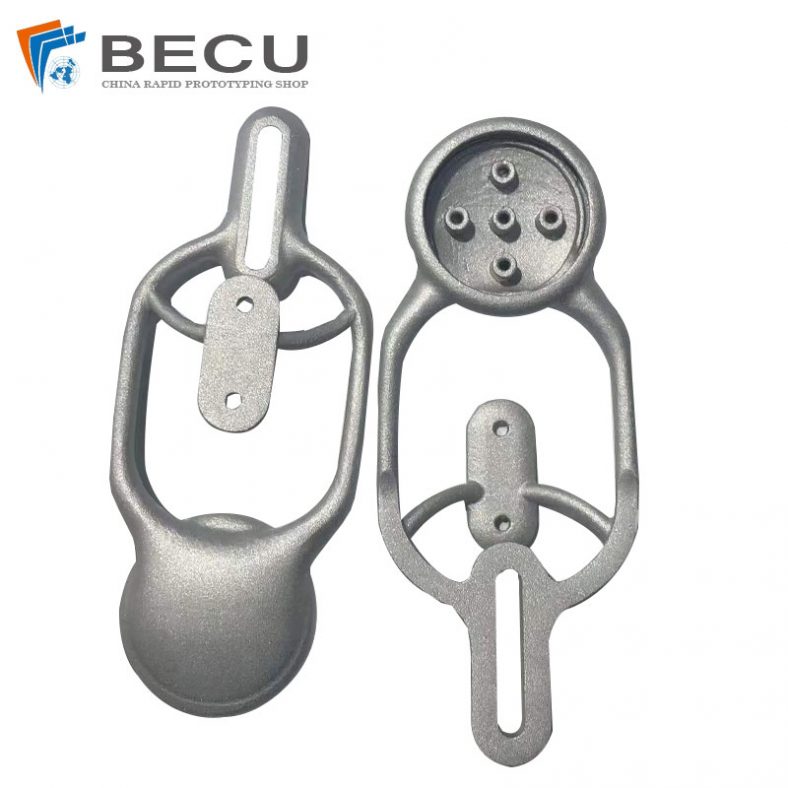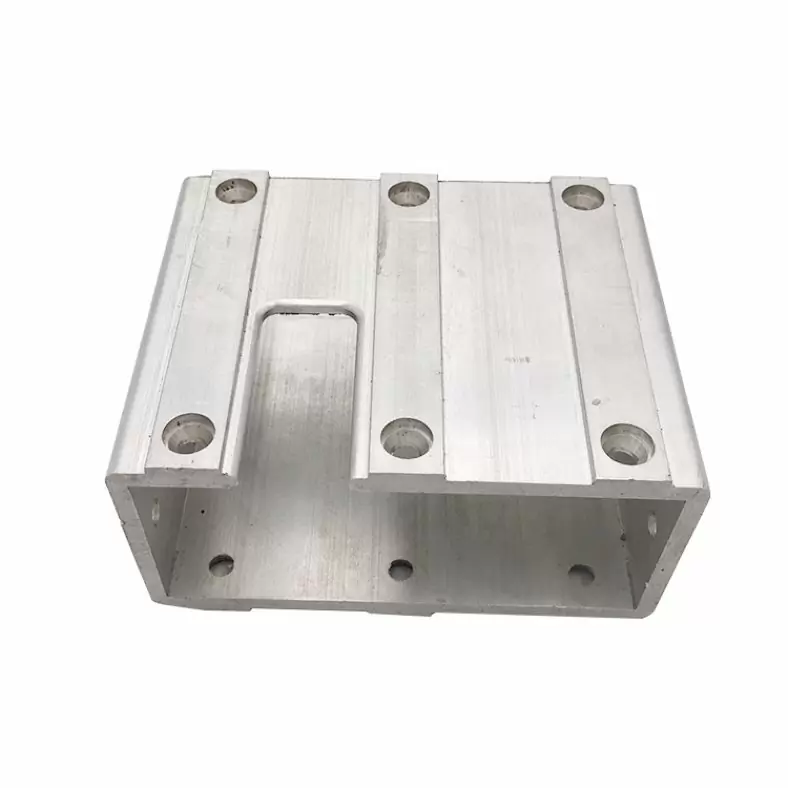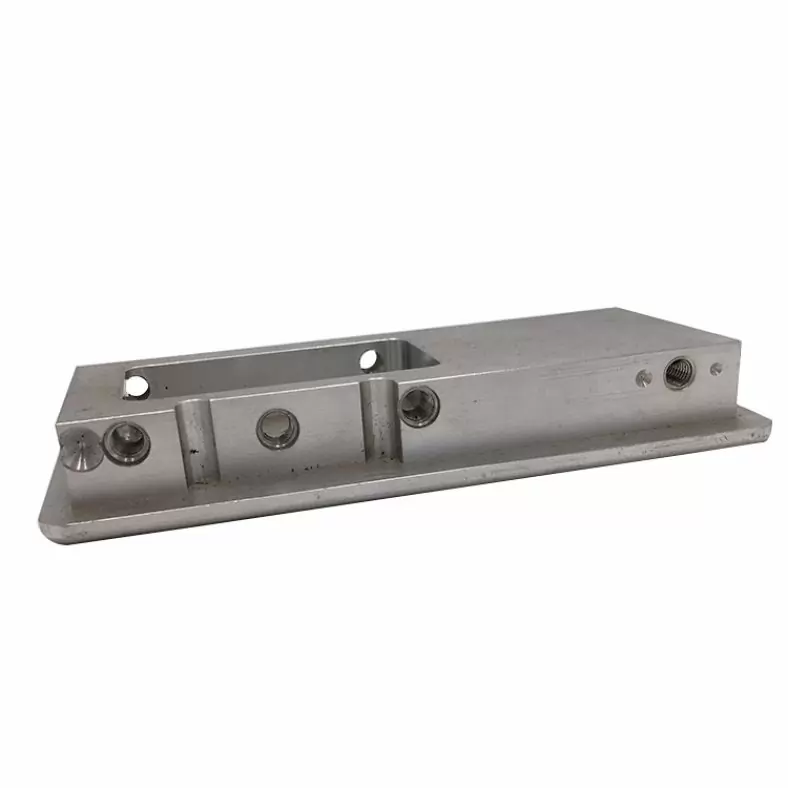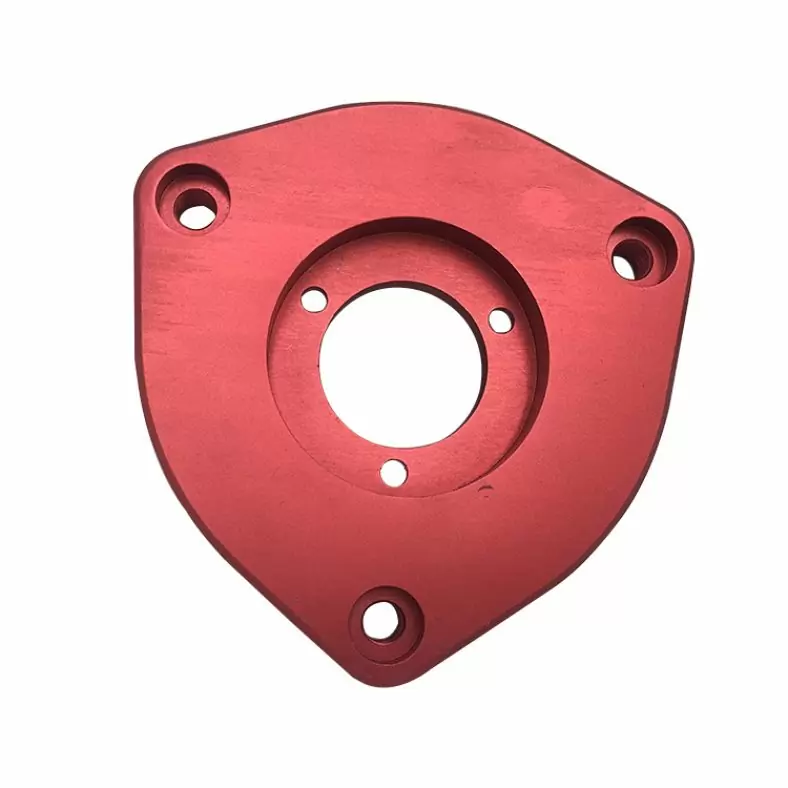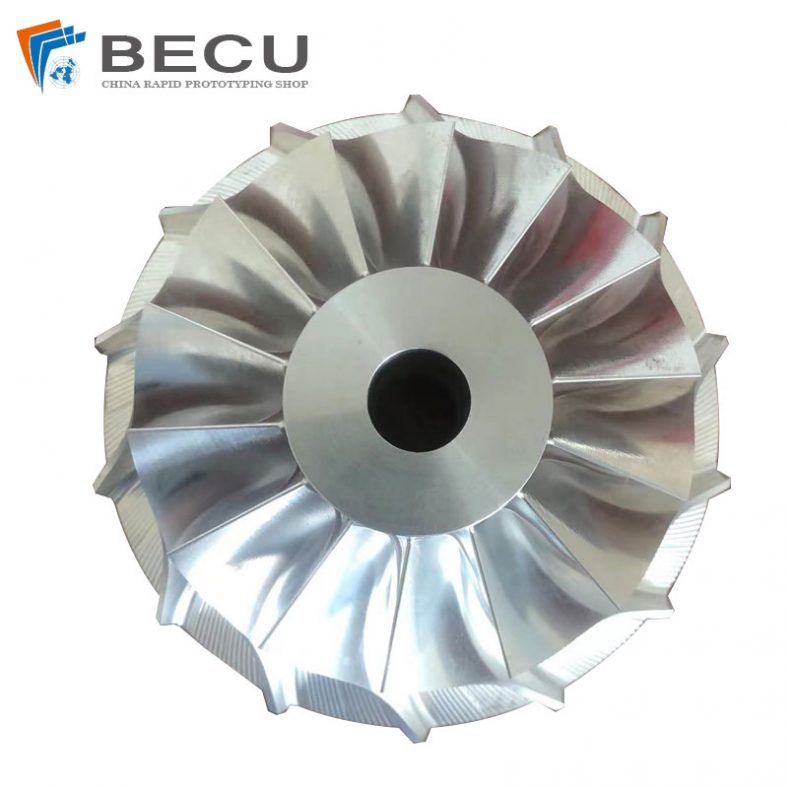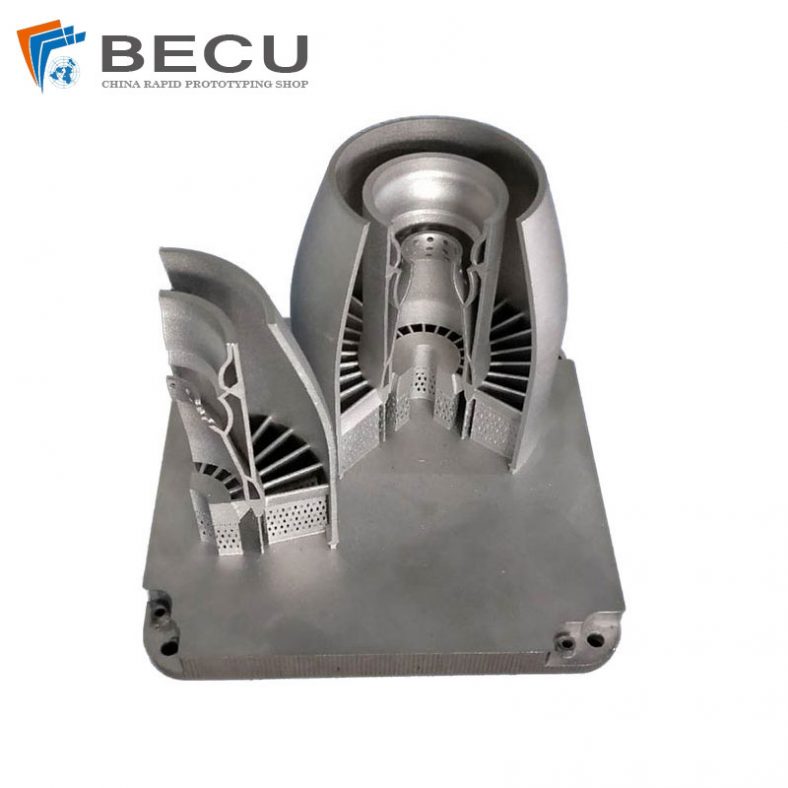In the ever-evolving landscape of modern industry, the collaboration between design and manufacturing has become more crucial than ever. The synergy between these two domains holds the key to efficient production, high-quality products, and streamlined processes. To address this imperative, Be-Cu prototype, a leader in CNC Machining, is proud to announce the release of a comprehensive guide titled “Bridging the Gap Between Design and Manufacturing.”
This in-depth guide delves into the critical aspects of aligning design and manufacturing processes. It highlights the challenges that often arise from the disconnect between these stages and provides actionable insights for creating a seamless transition, By aligning design intent with manufacturing feasibility, companies can streamline production, reduce costs, and enhance product quality,resulting in enhanced products and optimized workflows.
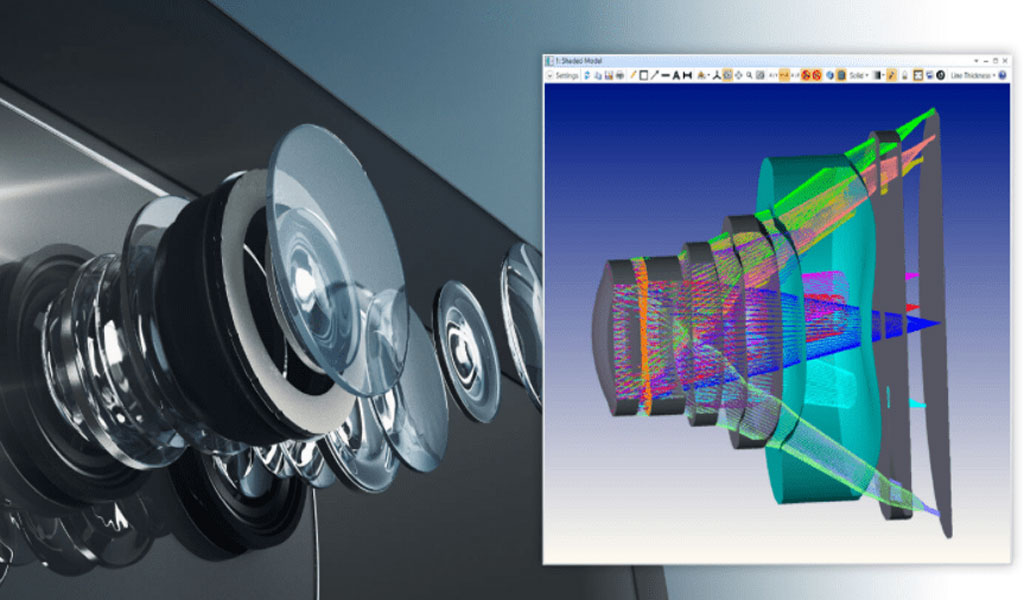
In-Depth Delves Into Design and Manufacturing
In the dynamic landscape of modern product development, the collaboration between design and manufacturing holds paramount importance. The symbiotic relationship between these two phases not only shapes the success of a product but also determines its overall efficiency, cost-effectiveness, and market viability. As industries continue to evolve and technology accelerates innovation, the need to bridge the gap between design and manufacturing becomes increasingly crucial.
The Significance of Design-Manufacturing Collaboration
Design and manufacturing are distinct phases in the product development lifecycle, each with its own set of objectives, methodologies, and challenges. Design focuses on creating a product that meets user needs, boasts innovative features, and stands out in a competitive market. Manufacturing, on the other hand, revolves around turning the design into a tangible reality, ensuring efficient production processes, cost-effectiveness, and high-quality output.
The collaboration between these phases ensures that the transition from concept to product is smooth and seamless. It ensures that the product designed is manufacturable within the constraints of available resources, technologies, and materials. By fostering close collaboration, companies can align design intent with manufacturing feasibility, thereby avoiding costly design changes during production, reducing time-to-market, and enhancing the overall product experience.
Challenges in the Design-Manufacturing Interface
While the potential benefits of design-manufacturing collaboration are substantial, numerous challenges can impede this collaboration.
One of the primary challenges is the inherent divide between design and manufacturing teams due to their differing goals and priorities.
Designers are often focused on pushing creative boundaries and delivering unique solutions, while manufacturing teams are concerned with efficiency, cost control, and scalability.
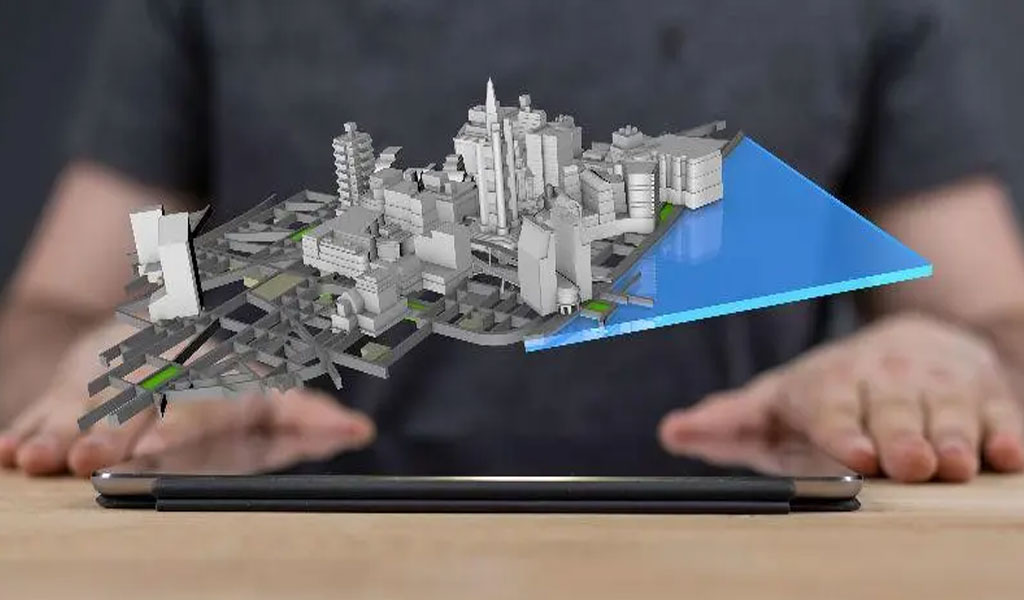
Another challenge lies in the communication gap between these teams. Misunderstandings, misinterpretations, and lack of effective communication channels can lead to discrepancies between the design intent and the manufacturable reality. Furthermore, the fast-paced nature of product development can amplify these challenges, as rushed decisions and insufficient collaboration can result in suboptimal outcomes.
Understanding the Design-Manufacturing Gap
In the realm of product development, the design-manufacturing gap represents the disparity between the creative vision of designers and the practical requirements of manufacturing. Bridging this gap is essential for achieving a harmonious and efficient product development process.
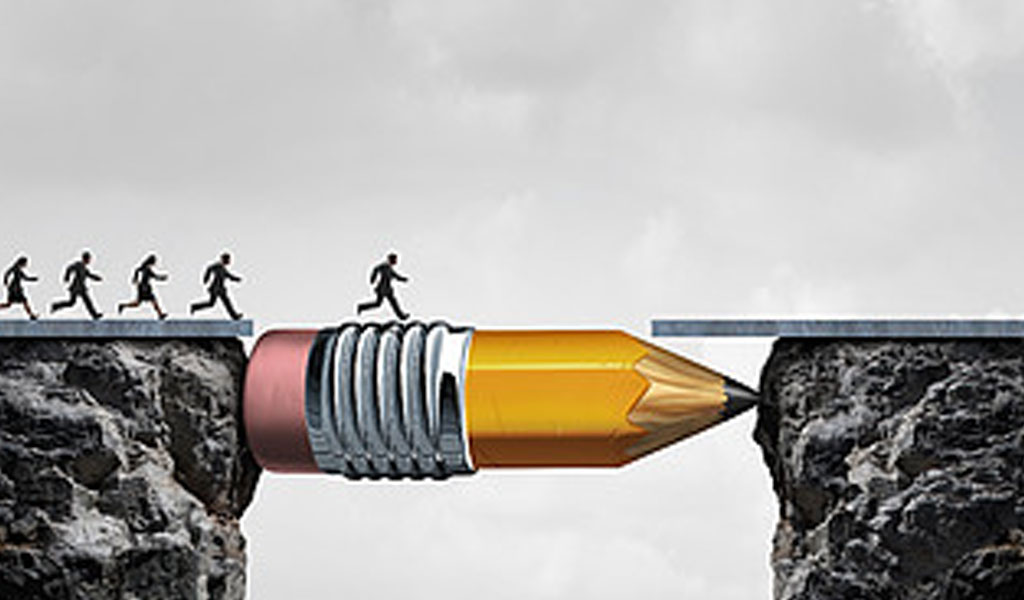
Design and Manufacturing Workflows: An Overview
Design and manufacturing workflows encompass distinct sets of activities, objectives, and methodologies. The design phase is characterized by creativity, innovation, and ideation. Designers focus on conceptualizing ideas, creating prototypes, and refining the visual and functional aspects of a product. The manufacturing phase, in contrast, revolves around turning these designs into tangible products. It involves selecting appropriate materials, determining production methods, and optimizing processes for efficiency and quality.
While these phases have different objectives, they are intrinsically linked. The design phase lays the foundation for the manufacturing phase, and the manufacturing phase provides critical feedback that can impact design decisions. A well-coordinated collaboration between these phases ensures that design intent translates seamlessly into a manufacturable reality.
Common Causes of Discrepancies
Discrepancies between design and manufacturing often arise due to various factors:
- Lack of Communication: Inadequate communication channels between design and manufacturing teams can lead to misunderstandings. Designers might not have a comprehensive understanding of manufacturing capabilities, and manufacturers might not fully comprehend design requirements.
- Technology and Expertise Gap: Rapid technological advancements can create a gap in knowledge and expertise. Designers might be unaware of the latest manufacturing techniques, while manufacturers might struggle to understand complex design concepts.
- Time and Cost Constraints: Pressure to meet tight deadlines and cost targets can force designers to make design decisions without fully considering manufacturing implications. Manufacturers, in turn, might face challenges in optimizing production processes to align with design intent.
- Design Complexity: Intricate designs with complex geometries can be challenging to manufacture accurately and efficiently. As a result, design changes might be necessary, leading to delays and increased costs.
- Material Selection: Inappropriate material choices can impact manufacturability and product performance. Designers might prioritize aesthetics without considering material availability, cost, and compatibility with manufacturing processes.
The Impact of Poor Collaboration
The repercussions of poor collaboration between design and manufacturing teams can be far-reaching:
- Rework and Delays: Misaligned design and manufacturing can lead to design changes during production, resulting in costly rework and delays. This can lead to missed market opportunities and increased time-to-market.
- Increased Costs: Design choices that disregard manufacturing considerations can lead to inefficient production processes, wastage of materials, and increased manufacturing costs.
- Compromised Product Quality: When design and manufacturing teams are not in sync, the final product might not meet quality standards. Poorly manufactured products can damage brand reputation and customer trust.
- Innovation Stagnation: Inefficient collaboration can stifle innovation. Designers might avoid pushing boundaries due to concerns about manufacturing feasibility, limiting the potential for groundbreaking products.
- Communication Breakdowns: Poor collaboration can result in frustration, misunderstandings, and tensions between teams. This breakdown in communication can lead to a negative work environment and hinder creativity.
Bridging the design-manufacturing gap requires a concerted effort to address these challenges. Effective communication, interdisciplinary collaboration, and the integration of tools and methodologies can pave the way for a more streamlined and productive product development process. In the following sections, we will delve into strategies to create a collaborative culture and early-stage design considerations that can mitigate these challenges and foster a successful partnership between design and manufacturing teams.
Creating a Collaborative Culture
Fostering a collaborative culture is pivotal in bridging the gap between design and manufacturing. A culture of open communication, mutual understanding, and shared goals enhances the overall product development process and leads to more innovative and successful outcomes.
Cross-Functional Teams: Benefits and Composition
Cross-functional teams, comprised of members from both design and manufacturing disciplines, are the cornerstone of effective collaboration. These teams bring diverse perspectives to the table, allowing for a holistic approach to problem-solving and decision-making. Benefits of cross-functional teams include:
- Diverse Expertise: Designers and manufacturers contribute their unique expertise, leading to more well-rounded solutions that consider both creative and practical aspects.
- Early Alignment: Early involvement of manufacturing experts in the design phase ensures that potential manufacturing challenges are identified and addressed at an early stage.
- Efficient Problem Solving: When challenges arise, cross-functional teams can collaboratively brainstorm and quickly find solutions that balance design intent and manufacturing feasibility.
The composition of these teams should be carefully considered. It should include representatives from design, manufacturing engineering, materials, quality control, and other relevant disciplines. By bringing together individuals with varied skill sets and perspectives, cross-functional teams can effectively address challenges from multiple angles.
Establishing Effective Communication Channels
Clear and effective communication is the linchpin of successful collaboration between design and manufacturing. Establishing efficient communication channels helps in bridging the gap and ensuring that crucial information is shared in a timely manner. Some strategies to enhance communication include:
- Regular Meetings: Schedule regular meetings between design and manufacturing teams to discuss ongoing projects, address challenges, and share updates.
- Collaboration Tools: Implement digital collaboration tools that facilitate real-time communication, document sharing, and collaborative decision-making.
- Design Reviews: Conduct design reviews with representatives from both teams to ensure that design decisions are aligned with manufacturing capabilities.
- Feedback Loops: Create feedback mechanisms that allow manufacturing teams to provide input during the design phase and designers to receive insights into the manufacturability of their designs.
Fostering a Culture of Mutual Understanding
A collaborative culture thrives on mutual respect and understanding between design and manufacturing teams. It’s essential to overcome any preconceived notions or stereotypes that might hinder effective collaboration. Strategies to foster this culture include:
- Education and Training: Arrange workshops and training sessions where designers learn about manufacturing processes, and manufacturers gain insights into design principles. This enhances mutual respect for each other’s expertise.
- Shared Goals: Align the objectives of both teams towards a common goal, such as delivering a high-quality product on time and within budget. This shared purpose encourages cooperation.
- Inclusive Decision-Making: Involve both design and manufacturing teams in decision-making processes, ensuring that everyone’s perspective is considered.
- Recognition of Achievements: Acknowledge and celebrate successful collaborations and outcomes, reinforcing the importance of teamwork and mutual support.
Creating an environment where both design and manufacturing teams appreciate and leverage each other’s strengths paves the way for innovation and efficiency. In the subsequent sections, we will delve into early-stage design considerations and how they contribute to a more cohesive collaboration between these phases.
Early-Stage Design Considerations
The foundation of successful collaboration between design and manufacturing lies in the early stages of product development. Addressing manufacturability, material selection, and cost estimation during these phases ensures that design intent aligns with manufacturing feasibility and economic viability.
Design for Manufacturability (DFM) Principles
Design for Manufacturability (DFM) is a set of principles that guides designers to create products that can be easily and efficiently manufactured. Incorporating DFM principles into the design process minimizes the risk of costly redesigns and production delays. Some key DFM principles include:
- Simplicity: Simplify product designs without compromising functionality. Complex designs can lead to manufacturing difficulties and increased costs.
- Standardization: Use standardized components and manufacturing processes whenever possible. This streamlines production and reduces the need for custom tooling.
- Minimize Tolerances: Design with achievable tolerances in mind to ensure consistent product quality without excessive rework.
- Avoid Overuse of Fasteners: Minimize the use of fasteners and other complex assembly methods that can increase assembly time and costs.
By adhering to DFM principles, designers can create designs that are not only innovative but also practical to manufacture, leading to smoother transitions between design and manufacturing phases.
Materials Selection and Impact on Manufacturing
Material selection plays a crucial role in both design and manufacturing. The choice of materials impacts product performance, aesthetics, and manufacturing feasibility. Consider the following factors when selecting materials:
- Manufacturability: Choose materials that are compatible with available manufacturing processes. Some materials might require specialized equipment or techniques, which can increase costs and lead times.
- Availability: Opt for materials that are readily available in the required quantities. Sourcing rare or exotic materials can result in supply chain challenges.
- Cost: Materials contribute significantly to the overall cost of production. Balancing material quality and cost is essential to meet budget constraints.
- Environmental Impact: Consider the environmental implications of material choices. Sustainable materials might align with the growing demand for environmentally-friendly products.
Collaboration between design and manufacturing teams during materials selection ensures that the chosen materials are feasible for production and align with the desired product characteristics.
Preliminary Cost Estimation and Budget Allocation
Early cost estimation is essential to ensure that design decisions align with budget constraints. Designers should work closely with manufacturing teams to estimate the potential production costs of various design options. This estimation should include factors like materials, labor, tooling, and overhead costs.
A collaborative approach to cost estimation allows designers to make informed decisions about design complexities, material choices, and other factors that influence costs. It helps in avoiding situations where design choices lead to unexpectedly high manufacturing expenses, which can disrupt the project timeline and financial planning.

By integrating preliminary cost estimation into the early design phase, companies can make strategic decisions that balance creative innovation with economic feasibility.
In the subsequent sections, we will delve into the role of prototyping and iterative design in aligning design and manufacturing, as well as the utilization of digital tools for seamless collaboration between these phases.
Prototyping and Iterative Design
Prototyping and iterative design are critical stages in the product development process that allow design and manufacturing teams to align their efforts and refine the product concept. These stages provide valuable opportunities for testing, validation, and continuous improvement.
Rapid Prototyping Technologies and Advantages
Rapid prototyping technologies have revolutionized the way designers and manufacturers collaborate. These technologies enable the creation of physical prototypes quickly and accurately, allowing for early-stage validation of design concepts. Advantages of rapid prototyping include:
- Faster Feedback: Designers can receive feedback from manufacturing teams sooner, reducing the risk of proceeding with a design that may have manufacturing challenges.
- Visualizing Concepts: Physical prototypes provide a tangible representation of design ideas, helping both teams to better understand the product’s form and functionality.
- Iterative Testing: Rapid prototyping facilitates iterative testing and refinement, enabling designers to make adjustments based on real-world feedback.
- Reduced Risk: Identifying design flaws and manufacturability issues early in the process reduces the risk of costly redesigns and production delays.
The Role of Iterative Prototyping in Refining Designs
Iterative prototyping involves creating multiple iterations of a design, each building upon the previous one based on feedback and testing results. This process allows for continuous refinement and optimization of the product. Key steps in iterative prototyping include:
- Build and Test: Create a prototype based on the initial design, then subject it to testing and evaluation, including functionality, usability, and manufacturability.
- Feedback Analysis: Gather feedback from both design and manufacturing teams, as well as potential end-users. Analyze this feedback to identify areas for improvement.
- Refinement: Incorporate feedback into the next iteration, making necessary design changes to address identified issues and enhance performance.
- Repeat: Repeat the cycle, creating new iterations with each round of testing and refinement until the design reaches the desired level of quality and manufacturability.
Iterative rapid prototyping ensures that both design and manufacturing considerations are integrated throughout the design process, resulting in a product that not only meets design intent but is also feasible to produce at scale.
Involving Manufacturing in Prototyping Feedback Loops
To effectively bridge the gap between design and manufacturing, involving manufacturing teams in the prototyping feedback loops is essential. Manufacturing experts can provide valuable insights into aspects such as production processes, material compatibility, and assembly challenges. By participating in design reviews and providing feedback during iterative prototyping, manufacturing teams contribute to:
- Early Problem Identification: Manufacturing teams can identify potential production challenges early, allowing designers to address these issues before they become major roadblocks.
- Optimized Manufacturing Processes: Manufacturing input can lead to design modifications that optimize production processes, reduce manufacturing costs, and improve efficiency.
- Realistic Production Assessments: Manufacturing teams can assess whether prototypes can be produced within the available resources, ensuring that the final product can be manufactured reliably.
- Design Refinement: Feedback from manufacturing can drive design refinements that enhance manufacturability without compromising design aesthetics and functionality.
By including manufacturing teams in the prototyping feedback loops, companies can create a collaborative environment where design and manufacturing considerations are interwoven, ultimately leading to products that are not only innovative but also feasible to produce at scale.
The subsequent sections will delve into digital tools that facilitate collaboration between design and manufacturing teams and explore the importance of design validation and simulation in aligning these phases.
Digital Tools for Collaboration
In today’s technology-driven landscape, digital tools play a pivotal role in facilitating collaboration between design and manufacturing teams. These tools streamline communication, enhance visualization, and enable real-time interaction, ensuring that both phases work in tandem towards a shared goal.
Computer-Aided Design (CAD) and Its Role
Computer-Aided Design (CAD) software forms the foundation of modern product development. CAD tools enable designers to create detailed digital representations of products, facilitating visualization and communication across teams. The role of CAD in collaboration includes:
- Design Visualization: CAD software allows designers to create 3D models that accurately represent the intended product. Manufacturing teams can review these models to understand design intent.
- Design Iteration: CAD models can be easily modified, enabling iterative design changes based on feedback from both design and manufacturing teams.
- Simulation: Some CAD tools include simulation capabilities that allow designers and manufacturers to assess the structural integrity, thermal behavior, and fluid dynamics of a product before physical prototypes are created.
- File Sharing: CAD files can be shared digitally, allowing both teams to access the most up-to-date design data and collaborate remotely.
Product Lifecycle Management (PLM) Systems
Product Lifecycle Management (PLM) systems are software platforms that facilitate the management of product data, processes, and collaboration throughout the entire product lifecycle. PLM systems offer several benefits for design and manufacturing collaboration:
- Centralized Data: PLM systems store all design-related data in a centralized repository, ensuring that all team members have access to the latest information.
- Version Control: PLM systems maintain version history, helping teams track changes and revert to previous iterations if necessary.
- Collaborative Workflows: PLM platforms support workflows that involve both design and manufacturing teams, ensuring that each phase’s requirements and constraints are considered.
- Change Management: PLM systems enable efficient change management, ensuring that design modifications are documented, reviewed, and approved before implementation.
Virtual Reality (VR) and Augmented Reality (AR) in Collaboration
Virtual Reality (VR) and Augmented Reality (AR) technologies are transforming how design and manufacturing teams collaborate. These immersive technologies allow teams to visualize, interact with, and manipulate digital designs in a three-dimensional space. Their role in collaboration includes:
- Design Review: VR and AR enable immersive design reviews, where both teams can evaluate the product’s aesthetics, functionality, and manufacturability in a virtual environment.
- Assembly Visualization: AR can assist manufacturing teams by overlaying digital assembly instructions onto physical components, simplifying complex assembly processes.
- Real-Time Collaboration: VR and AR enable real-time collaboration regardless of physical location. Designers and manufacturers can interact with the same digital model simultaneously.
- Error Detection: These technologies help identify design or manufacturing errors early, reducing the risk of costly mistakes during production.
By embracing these digital tools, companies can enhance communication, streamline workflows, and bridge the gap between design and manufacturing more effectively. In the upcoming sections, we will explore the importance of design validation and simulation in aligning design and manufacturing, as well as the significance of involving suppliers in the design process.
Design Validation and Simulation
Design validation and simulation are essential steps in ensuring that a product’s design is robust, functional, and manufacturable. These processes allow design and manufacturing teams to identify potential issues and optimize the product’s performance before moving to production.
Finite Element Analysis (FEA) for Structural Integrity
Finite Element Analysis (FEA) is a powerful simulation technique used to assess the structural integrity of a product. It helps predict how a design will respond to various loads, stresses, and environmental conditions. In the context of collaboration:
- Design Validation: FEA allows designers to test the product’s structural performance virtually, identifying areas of high stress or potential failure.
- Manufacturability Assessment: Manufacturers can use FEA to evaluate whether the design can be produced using available materials and processes without compromising its structural integrity.
- Iterative Refinement: FEA results can drive design modifications that enhance both structural performance and manufacturability.
Computational Fluid Dynamics (CFD) for Fluid Systems
For products involving fluid flow, Computational Fluid Dynamics (CFD) is used to simulate how fluids behave within the product. This simulation helps optimize fluid-related aspects, such as heat transfer, airflow, and pressure distribution. Collaboration benefits include:
- Performance Enhancement: CFD allows designers to optimize fluid dynamics for improved efficiency, cooling, and overall performance.
- Manufacturing Implications: Manufacturers can assess whether the design’s fluid pathways are feasible to produce and assemble.
- Early Detection of Issues: CFD simulations can identify design flaws or flow-related problems that might not be apparent in physical prototypes.
Benefits of Early Simulation in Manufacturing Alignment
One of the key advantages of simulation is the ability to align design and manufacturing requirements at an early stage. By integrating simulation into the design process:
- Risk Mitigation: Simulation helps identify and mitigate potential manufacturing challenges before they become major roadblocks.
- Cost Reduction: Early detection of issues allows designers to make informed decisions that optimize production processes and reduce manufacturing costs.
- Time Savings: Resolving design and manufacturing issues during simulation reduces the need for iterative physical prototyping, accelerating the product development timeline.
- Improved Collaboration: Simulation results provide tangible data that both design and manufacturing teams can analyze and discuss, fostering collaborative problem-solving.
By incorporating design validation and simulation into the collaborative process, companies can ensure that design decisions are well-informed and align with both creative intent and manufacturing feasibility.
The subsequent sections will explore the advantages of involving suppliers in the design phase, as well as the importance of continuous improvement and feedback loops in achieving seamless collaboration between design and manufacturing teams.
Supplier Involvement and Design
Involving suppliers in the design phase is a strategic approach that can significantly enhance collaboration between design and manufacturing teams. Supplier integration brings external expertise into the process and ensures that design decisions are aligned with both creative vision and practical feasibility.
Supplier Integration in the Design Phase
Traditionally, suppliers have been engaged during the manufacturing phase. However, involving them early in the design phase offers several benefits:
- Early Feedback: Suppliers can provide valuable feedback on design concepts, highlighting potential manufacturability challenges or suggesting improvements.
- Material Insights: Suppliers can recommend suitable materials based on their expertise, ensuring that material choices align with both design intent and manufacturing capabilities.
- Cost Estimation: Suppliers can provide early cost estimates, allowing designers to make informed decisions that align with budget constraints.
Leveraging Supplier Expertise for Better Designs
Suppliers are experts in their respective fields, and their insights can lead to more innovative and successful designs:
- Innovative Solutions: Suppliers can offer creative solutions based on their experience, pushing design boundaries while keeping manufacturing feasibility in mind.
- Production Efficiency: Supplier input can lead to designs that are optimized for efficient production, reducing lead times and costs.
- Reliability: Collaborating with trusted suppliers ensures that designs are based on materials and components that are readily available and well-tested.
Ensuring Supplier Compatibility with Design Intent
While involving suppliers is beneficial, ensuring that their contributions align with design intent is crucial:
- Clear Communication: Clearly communicate design requirements and expectations to suppliers to avoid misinterpretation.
- Collaborative Problem-Solving: Collaboratively address any discrepancies between design intent and supplier suggestions to find balanced solutions.
- Supplier Selection: Choose suppliers with a track record of successful collaboration and a willingness to align their expertise with your design goals.
Supplier involvement goes beyond transactional relationships, evolving into collaborative partnerships that contribute to innovative, manufacturable, and cost-effective product designs.
The subsequent sections will explore the importance of continuous improvement and feedback loops in achieving seamless collaboration between design and manufacturing teams, as well as the significance of training and skill enhancement to bridge knowledge gaps.
Case Studies
Examining real-world examples provides insights into how successful collaboration between design and manufacturing can lead to exceptional products. Let’s explore case studies from various industries that highlight the importance of aligning design and manufacturing efforts.
Automotive Industry: Aligning Design with Production
In the automotive industry, design-manufacturing collaboration is crucial for producing vehicles that are both aesthetically appealing and functionally efficient. Consider a case where an automotive manufacturer aimed to introduce a new electric vehicle model. By involving manufacturing teams early in the design phase, they identified opportunities to optimize battery placement for efficient assembly, reducing production costs and ensuring safety compliance. Additionally, simulation tools allowed them to assess the vehicle’s structural integrity and aerodynamics, leading to a design that met performance requirements while being manufacturable at scale.
Consumer Electronics: From Concept to Manufacturing
Consumer electronics(as custom led lighting parts) often demand rapid innovation and tight integration between design and manufacturing. Imagine a scenario where a technology company aimed to launch a cutting-edge smartphone. By leveraging CAD and simulation tools, they iteratively refined the design to ensure ergonomic comfort, efficient heat dissipation, and manufacturability. Supplier involvement helped source materials that enhanced the device’s durability, aligning with design intentions while maintaining a feasible production process. The collaborative efforts resulted in a high-quality product that met market demands.
Aerospace Sector: Precision Design for Complex Components
In the aerospace industry, precision and safety are paramount. Let’s consider the development of a new aircraft component with intricate geometries. Collaborative design and manufacturing ensured that the component could be accurately manufactured within tight tolerances. Finite Element Analysis (FEA) and Computational Fluid Dynamics (CFD) simulations were used to validate the design’s structural integrity and aerodynamic performance. Supplier involvement ensured that specialized materials met both aerospace standards and manufacturing requirements, culminating in a component that met design, safety, and production goals.
These case studies underscore the significance of collaboration between design and manufacturing teams across industries. By embracing cross-functional communication, digital tools, and early-stage considerations, companies can achieve remarkable outcomes that combine innovative design with practical manufacturability.
The subsequent sections will explore the value of continuous improvement and feedback loops in refining design and manufacturing processes and the importance of training and skill enhancement to bridge knowledge gaps in collaborative efforts.
Continuous Improvement and Feedback Loops
Creating a culture of continuous improvement and maintaining open feedback loops between design and manufacturing teams are essential for refining processes, optimizing products, and fostering successful collaboration.
Post-Production Analysis and Design Improvements
Once a product is in production, the collaboration between design and manufacturing does not end. Post-production analysis plays a crucial role in identifying opportunities for design improvements. By closely monitoring production outcomes and performance, companies can:
- Identify Defects: Analyze products that deviate from design intent to understand the root causes of defects and implement corrective measures.
- Enhance Efficiency: Evaluate production processes for inefficiencies or bottlenecks and work collaboratively to streamline operations.
- Iterative Refinement: Use real-world performance data to drive iterative design changes that address shortcomings and improve product quality.
The Role of End-User Feedback in Iterative Design
End-user feedback is a valuable resource for iterative design improvements. Collecting input from customers who use the product provides insights into how it performs in real-world scenarios. By involving both design and manufacturing teams in the analysis of user feedback:
- Performance Optimization: Identify areas where the product excels and where it falls short in meeting user expectations.
- Continuous Innovation: Use user feedback to drive innovations and design changes that enhance the overall user experience.
- Quick Adaptation: Swiftly address any issues or concerns raised by users, demonstrating a commitment to delivering products that meet their needs.
Incorporating Lessons Learned into Future Projects
One of the most significant benefits of collaboration is the accumulation of knowledge and lessons learned. Companies can capitalize on this knowledge by:
- Documentation: Ensure that feedback, design changes, and manufacturing insights are documented for reference in future projects.
- Cross-Project Sharing: Encourage sharing of experiences and best practices across different projects and teams.
- Training and Skill Enhancement: Use lessons learned to identify training needs and enhance the skills of both design and manufacturing teams.
Incorporating lessons learned into future projects enables continuous growth and improvement, fostering a culture of innovation and collaboration that permeates the entire organization.
As we conclude this comprehensive guide, it’s clear that successful collaboration between design and manufacturing is not just a technical requirement but a cultural and organizational commitment. By integrating cross-functional teams, embracing digital tools, and leveraging expertise from suppliers, companies can create products that are not only innovative but also efficiently manufacturable. The journey towards seamless collaboration is marked by iterative design, constant improvement, and a shared dedication to excellence.
Training and Skill Enhancement
To truly bridge the gap between design and manufacturing, investing in training and skill enhancement is paramount. Equipping both design and manufacturing teams with the necessary knowledge and expertise fosters effective collaboration and ensures that both phases align seamlessly.
Cross-Training Designers and Engineers
Cross-training designers and engineers involves exposing them to each other’s disciplines to promote a deeper understanding of the challenges and considerations involved. By doing so:
- Enhanced Communication: Designers can better communicate their intentions, and engineers can comprehend design concepts more effectively.
- Collaborative Problem-Solving: Teams can collaboratively identify solutions that balance creative design with practical manufacturing requirements.
- Holistic Thinking: Designers and engineers gain a holistic perspective, resulting in more thoughtful and well-rounded decisions.
Professional Development to Bridge Knowledge Gaps
Offering professional development opportunities helps team members stay up-to-date with evolving technologies and practices. Continuous learning:
- Bridges Knowledge Gaps: Helps designers understand manufacturing processes and engineers comprehend design principles.
- Boosts Confidence: Team members are more confident when making decisions that require cross-disciplinary considerations.
- Promotes Innovation: Exposure to new ideas and methodologies can lead to innovative solutions that benefit both design and manufacturing.
Workshops, Seminars, and Industry Collaboration
Organizing workshops, seminars, and encouraging collaboration with industry peers can be invaluable for knowledge sharing:
- Workshops: Hands-on workshops can offer practical insights into manufacturing processes for designers and design principles for engineers.
- Seminars: Guest speakers and experts can provide deep dives into specific topics, expanding team members’ expertise.
- Industry Collaboration: Engaging with professionals from other companies promotes exposure to different approaches and perspectives.
Investing in training and skill enhancement initiatives underscores a commitment to fostering a collaborative environment where both design and manufacturing teams are equipped to work harmoniously towards common goals.
As we conclude this comprehensive guide, we’ve covered strategies, tools, and best practices to bridge the gap between design and manufacturing. By embracing collaboration, adopting digital tools, incorporating feedback loops, and continuously enhancing skills, companies can achieve a harmonious partnership that leads to innovative, high-quality, and manufacturable products.
Overcoming Cultural and Organizational Barriers
Bridging the gap between design and manufacturing isn’t just about technical strategies; it’s also about addressing cultural and organizational barriers that might hinder effective collaboration. Overcoming these barriers requires a concerted effort to foster a collaborative culture and ensure alignment throughout the organization.
Addressing Resistance to Change
Resistance to change is a common barrier in any organization. To address this challenge:
- Communicate Benefits: Clearly communicate the benefits of collaboration, emphasizing how it improves efficiency, reduces costs, and enhances product quality.
- Showcase Success Stories: Share success stories from within the organization or the industry, illustrating the positive outcomes of collaborative efforts.
- Involve Key Stakeholders: Involve key stakeholders early to gain their buy-in and address concerns upfront.
Top-Down Support for Collaboration Initiatives
For collaboration initiatives to succeed, top-down support is crucial. Leadership should:
- Set Expectations: Clearly communicate the importance of collaboration and its alignment with organizational goals.
- Allocate Resources: Provide the necessary resources, including budget, tools, and personnel, to facilitate collaboration efforts.
- Lead by Example: Demonstrate collaborative behavior by engaging with cross-functional teams and valuing their contributions.
Cultural Transformation for Sustained Improvement
Cultural transformation involves reshaping the organization’s norms and values to prioritize collaboration:
- Clear Communication: Foster open communication channels that encourage sharing of ideas and concerns between teams.
- Reward Collaboration: Recognize and reward collaborative behavior to reinforce its importance in the organization.
- Training and Development: Provide training programs that promote cross-disciplinary understanding and teamwork.
- Continuous Feedback: Encourage continuous feedback from teams and use it to refine collaboration processes.
By addressing these cultural and organizational barriers, companies can create an environment where collaboration is not just a strategy but an integral part of the organization’s DNA.
With this, we conclude our comprehensive guide on bridging the gap between design and manufacturing. By understanding the significance of collaboration, utilizing digital tools, embracing continuous improvement, and fostering a collaborative culture, organizations can optimize their product development processes, deliver innovative solutions, and thrive in today’s dynamic business landscape.
Use Be-Cu.com to help bridge the gap from design to manufacturing
Bridging the gap between design and manufacturing is a multifaceted journey that requires collaboration, communication, and a commitment to excellence. This comprehensive guide has explored strategies, tools, and best practices to create a seamless partnership between these two critical phases of product development.
Summarizing Key Takeaways
As we reflect on the key takeaways from this guide:
- Collaboration is Crucial: Effective collaboration between design and manufacturing teams is essential for creating products that are both innovative and feasible to produce.
- Early Involvement Yields Benefits: Involving manufacturing teams early in the design phase ensures that potential challenges are identified and addressed before they escalate.
- Digital Tools Enhance Communication: Computer-Aided Design (CAD), simulation software, and Product Lifecycle Management (PLM) systems facilitate communication, visualization, and data sharing.
- Iterative Design is Essential: Prototyping, simulation, and iterative design allow for continuous refinement, ensuring that products meet design intent and manufacturability requirements.
- Supplier Involvement Adds Value: Engaging suppliers early in the process leverages their expertise, leading to better material choices, cost estimates, and overall product quality.
- Feedback Loops Drive Improvement: Continuous improvement and feedback loops between design, manufacturing, and end-users refine products and processes over time.
The Path Forward: Integrating Design and Manufacturing
The path forward involves aligning design and manufacturing not as isolated phases, but as interconnected components of a holistic product development process. Companies that prioritize collaboration, invest in cross-training and skill enhancement, and foster a culture of innovation and learning are best positioned for success.
By overcoming cultural barriers, leveraging digital tools, and embracing a shared vision, organizations can seamlessly integrate design and manufacturing, yielding products that captivate the imagination while respecting the practicalities of production. The result? Innovative, high-quality products that resonate with customers, elevate brand reputation, and drive business growth.
As you embark on your journey towards effective collaboration between design and manufacturing, remember that the ultimate goal is to create a harmonious partnership that brings the best of creativity and practicality together, shaping the future of product development.


